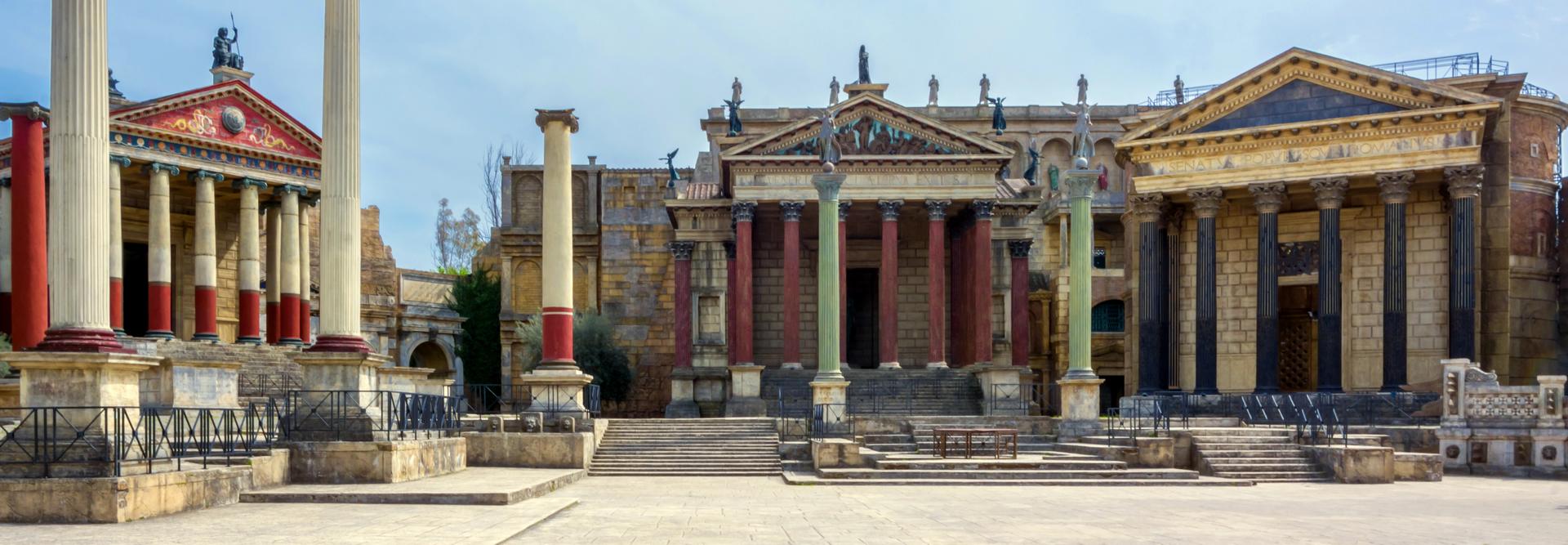About…
ancient Rome in the Bible
also known as: Roma
Greek: Ῥώμη —transliteration: Rhómé —meaning: Rome —occurrences: 8 (in Acts, Romans, 2 Timothy)
Greek: Ῥωμαῖος —transliteration: Rhómaios —meaning: Roman —occurrences: 12 (in John and Acts)
At the time of Christ, Rome was the most celebrated and influential city in the world.
It is said to have been founded in 753 BC, and was named after Romulus, its legendary founder and first king who then established the Roman senate consisting of 100 men from leading families.
Virtual center of the world at the time of Jesus Christ
When the New Testament was written, Rome was enriched and adorned with the spoils of the world, and contained a population estimated at 1,200,000, of which the half were slaves, and including representatives of nearly every nation then known. It was distinguished for its wealth and luxury and reckless extravagance. The Roman Empire of which it was the capital had then reached its greatest prosperity.
On the day of Pentecost there were “strangers from Rome” in Jerusalem who doubtless carried back to Rome reports of that great day, and were instrumental in founding the church there.
The Apostle Paul was brought to this city a prisoner, where he remained for two years (Acts 28:30-31) “in his own hired house.”
While here, Paul wrote his epistles to the Philippians, to the Ephesians, to the Colossians, to Philemon, and probably also to the Hebrews.
He had during these years for companions Luke and Aristarchus (Acts 27:2), Timothy (Philippians 1:1; Col. 1:1), Tychicus (Ephesians 6:21), Epaphroditus (Philippians 4:18), and John Mark (Col. 4:10).
Beneath this city are extensive galleries, called “catacombs,” which were used from about the time of the apostles (one of the inscriptions found in them bears the date 71 AD) for some 300 years as places of refuge in the time of persecution, and also of worship and burial. About 4,000 inscriptions have been found in the catacombs. These give an interesting insight into the history of the church at Rome down to the time of Constantine.
Trophies of war added to the city of Rome as a result of winning the Jewish–Roman wars
After the Roman army sacked and destroyed Jerusalem and erased Herod’s Temple stone by stone in 70 AD, Emperor Vespasian used the resulting spoils of war from Jerusalem and Herod’s Temple to build a grand and significant pagan temple in Rome (71 AD) at the heart of the city. It honored Pax, the Roman goddess of Peace, and was named Templum Pacis, meaning Temple of Peace.

It housed such revered Jewish artifacts as the Table of Shewbread and the 7-branched menorah candlesticks. The interior and surrounding buildings were decorated with various treasures collected in Judea by the Roman army. The ancient Greek historian Procopius of Caesarea Maritima writes of emerald-encrusted treasures of King Solomon, which, scholar Robert Coates-Stephens believes must have been stored in the Temple of Peace complex, as they were eventually looted by the Visigoth’s King Alaric I in 410 AD (or in 455 AD by Gaiseric, the king of the Vandals and Alans).
- What is HEROD’S TEMPLE, the place that Jesus Christ visited repeatedly?
- What is JERUSALEM, and why is it highly significant in world history and future events?
More information
People
- Who is AUGUSTUS?
- Who is NERO?
- Who is CLAUDIUS?
- CAESARS of Rome
- Kings of the Bible
- Who is PONTIUS PILATE?
- Who is AGRIPPA II?
- Who are the men called Herod in the Bible?
- What is a CENTURION in the Bible?
- What is a tetrarch?
- About MARTYRS for Jesus Christ in the Bible
- Imprisonment and execution of PAUL, a Roman citizen
- What is an Apostle?
- About the book ACTS OF THE APOSTLES
- What is the Epistle to the Romans?
- JULIUS, a Roman centurion
- Christian woman named MARY in Rome
- HERODION, a Christian in Rome
- THEOPHILUS, a Christian Roman
- Jewish ZEALOTS who uprose against Rome
Practices
- citizenship
- About taxes in the Bible
- About taxing in the Bible
- What is tribute money?
- About money in the Bible
- Prisons in the Bible
- What is crucifixion?
- PERSECUTION of Godly people
- What is THE CHURCH according to the Bible?
- About slaves and slavery in the Bible
- Does the Bible condone slavery?
Places
- The Three Taverns, near Rome
- Appii Forum, near Rome
